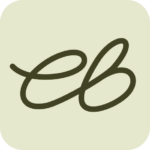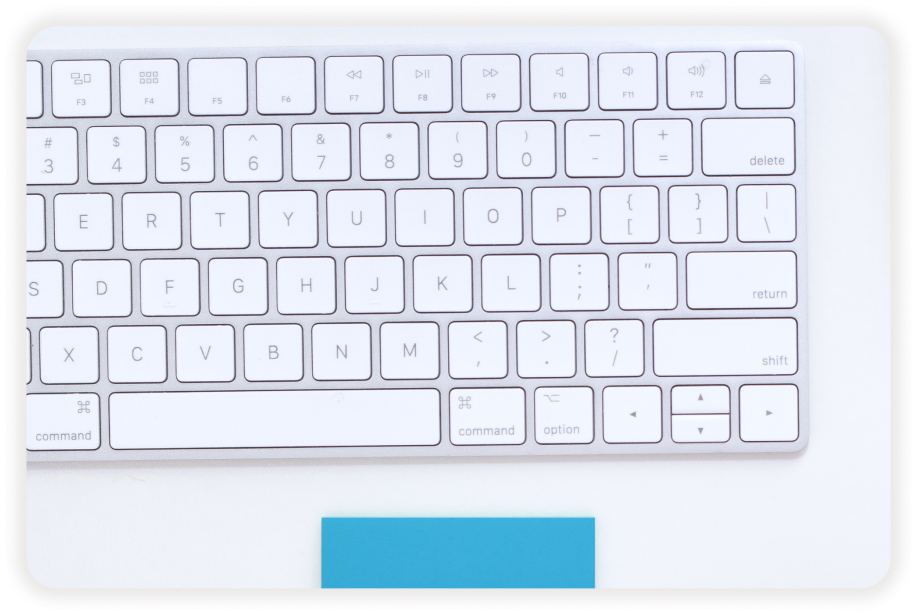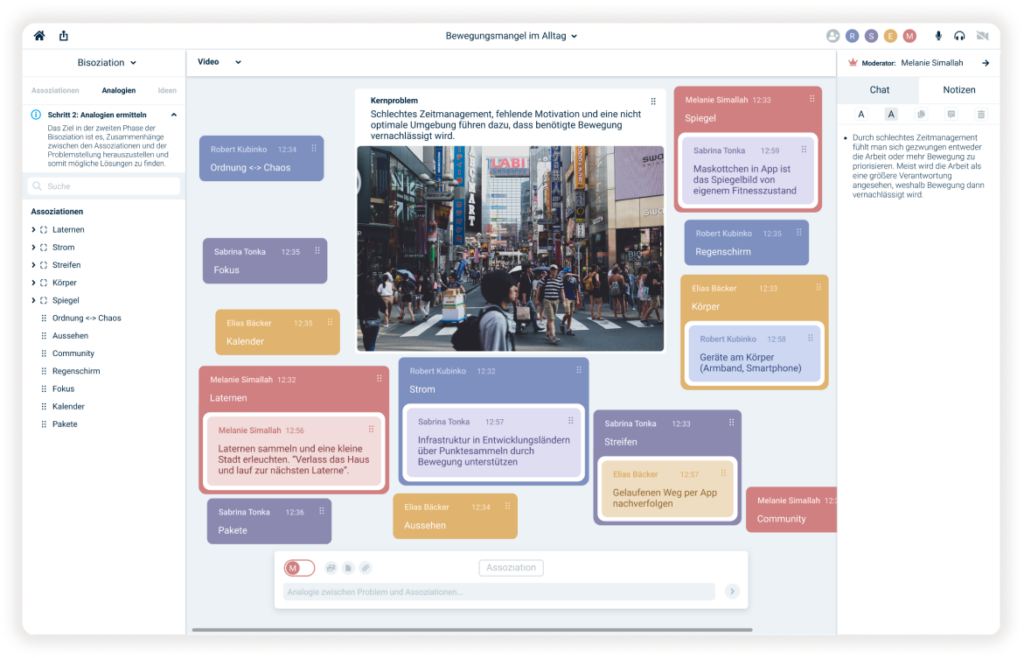A prototype of a web application for creativity techniques that considers cognitive impact.
Module: Project Work
Team: just me
Role: Research & UI/UX
Tool: Figma
Timeline: October 2020 – January 2021
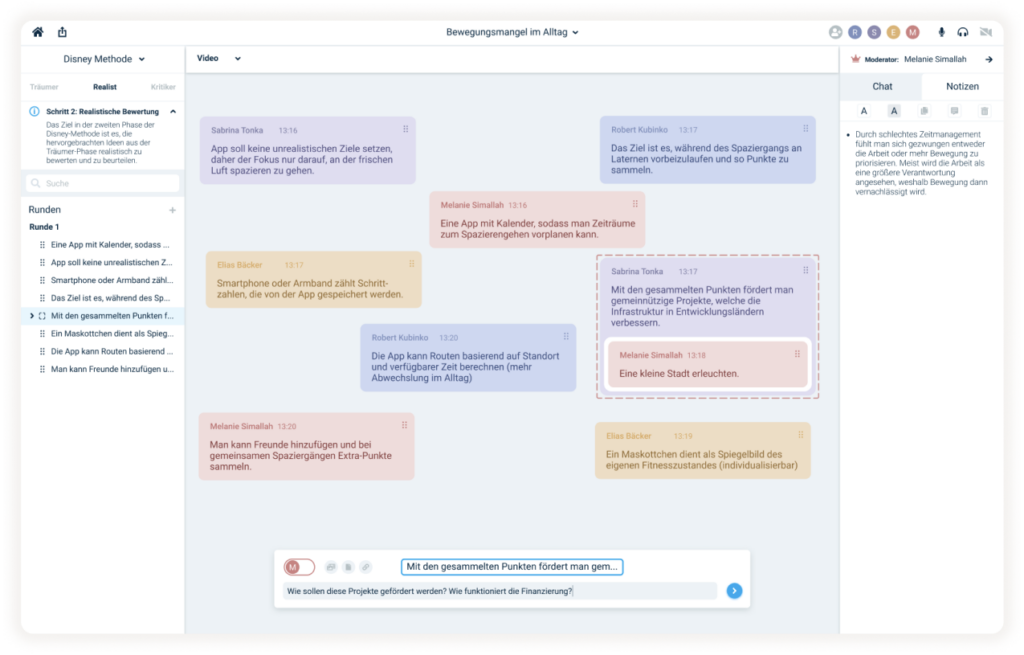
Problem statement
Cognitive impact plays a crucial role in the application of creativity techniques and for their results. However, the changes in cognitive impact are rarely considered when switching from analogue to digital application of creativity techniques.
Background
Hypothesis
A tool that minimises the changes in cognitive impact between analogue and digital application of creativity techniques. Furthermore, the tool provides a selection of different creativity techniques that creative teams can collaborate on remotely.
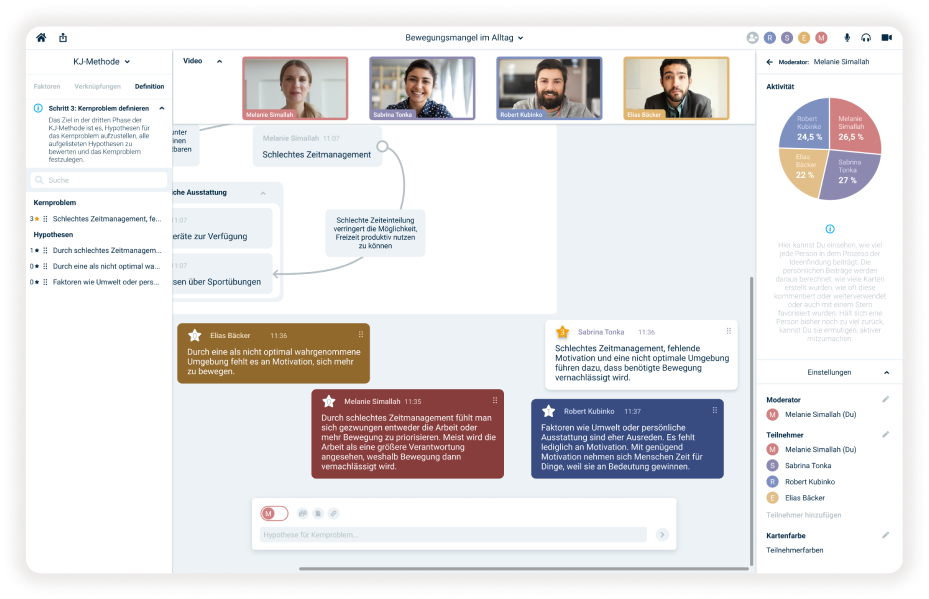
Why?
Cognitive processes have a great impact on the course of creativity techniques and thus on the results achieved. The better cognitive processes are taken into account when carrying out creativity techniques, the better the results.
Business opportunities
This application would be an excellent tool to efficiently support creative teams that want to optimise their creativity process and the resulting outcomes.
Easy collaboration
Reduce the lack of equipment for applying creativity techniques by providing a digital solution.
Optimised process
Optimise cognitive processes by reducing negative environmental influences.
Remote access
Enable teams worldwide to collaborate on creativity techniques by providing a web application.
Research
Cognitive processes
After researching the topic of cognitive processes itself, I focused on two different theories of cognitive processes to evaluate their influences on the application of creativity techniques.
I did research on:
- Mental Models by Johnson-Laird
- Theory of Embodied Cognition
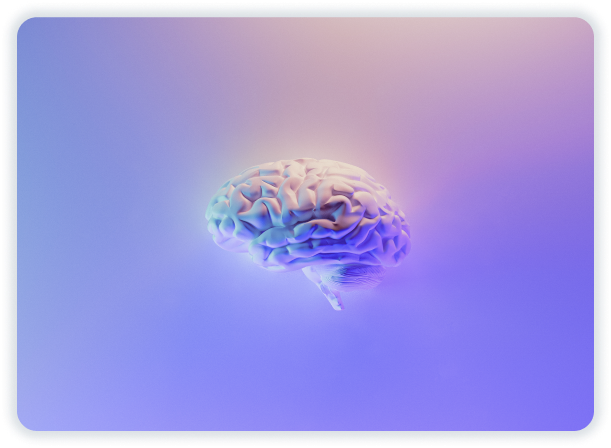
Creativity techniques
After exploring the topic of creativity techniques itself, I researched the importance of cognitive processes for creativity techniques as well as the influences of creativity techniques on cognitive processes. After that, I picked out three creativity techniques to focus on for my prototype.
I focused on the following creativity techniques:
- KJ Method
- Bisociation
- Walt Disney Method
Insights
The KJ Method can be used specifically to define the core problem in the first phase of the problem-solving process.
Bisociation can be used as a creativity technique to generate ideas for possible solutions based on a defined problem.
The Walt Disney Method is helpful in a later phase of the problem-solving process to elaborate and evaluate ideas.
With the help of Mental Models, a person can evaluate situations in advance in order to adapt his or her actions accordingly.
Embodied cognition describes the idea that the brain draws on functions and sensory impressions of the body to perceive and interact with its environment.
Concept
Prototype
A prototype implemented as a click dummy will be used to illustrate the concept of the web application. This is intended to represent an exemplary run through a creativity process and demonstrates how three creativity techniques are carried out by a team of four people.
First, the KJ Method is used to define a core problem. Bisociation is then used to collect ideas to solve the defined core problem. These ideas are finally evaluated using the Disney Method to achieve a satisfactory result.
Mockup
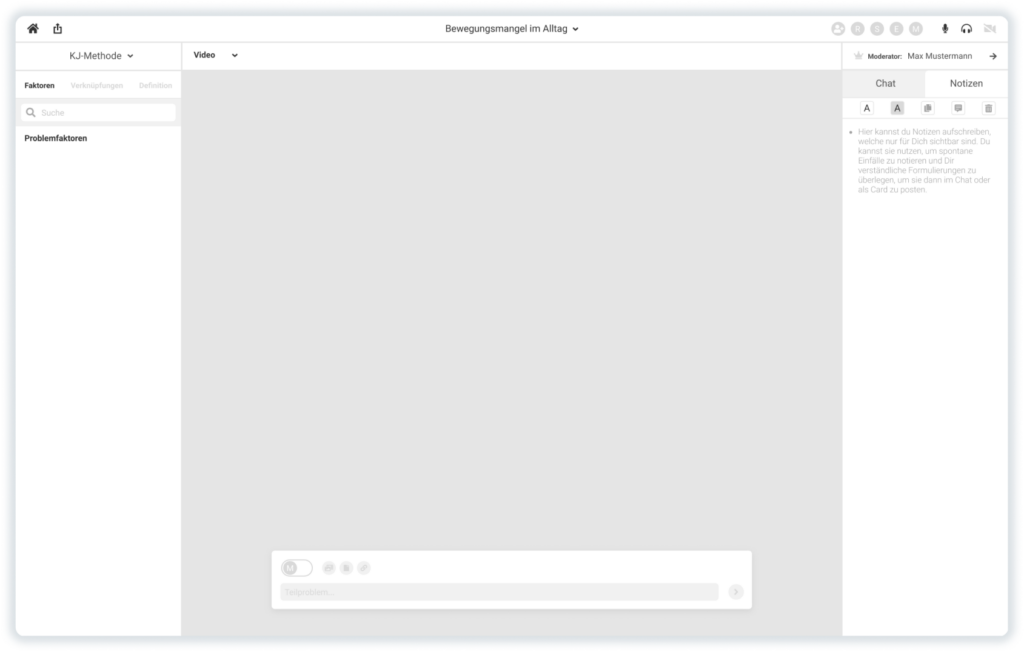
Design
Key moments
Below are some of the key moments of the web application for creativity techniques based on my research. Further research and testing would likely uncover more use cases and creativity techniques.
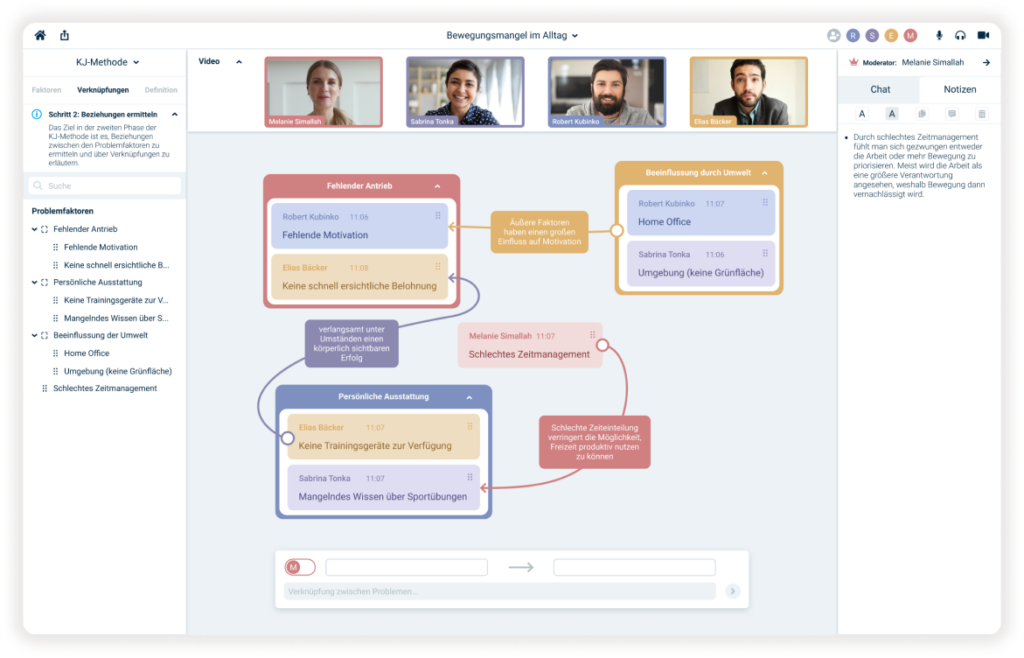
KJ Method
The KJ Method can be used in the first phase of a problem-solving process. The method starts with collecting information to a given problem. Each piece of information is written separately on a piece of paper. Overlapping topics of information are then combined into piles. Next, the resulting piles are given a title and then combined into new groups. These are also given titles and then relationships and dependencies between the individual groups are highlighted. This approach allows all problem-relevant factors to be identified and their relationships analysed in order to be able to formulate hypotheses on the core problem.
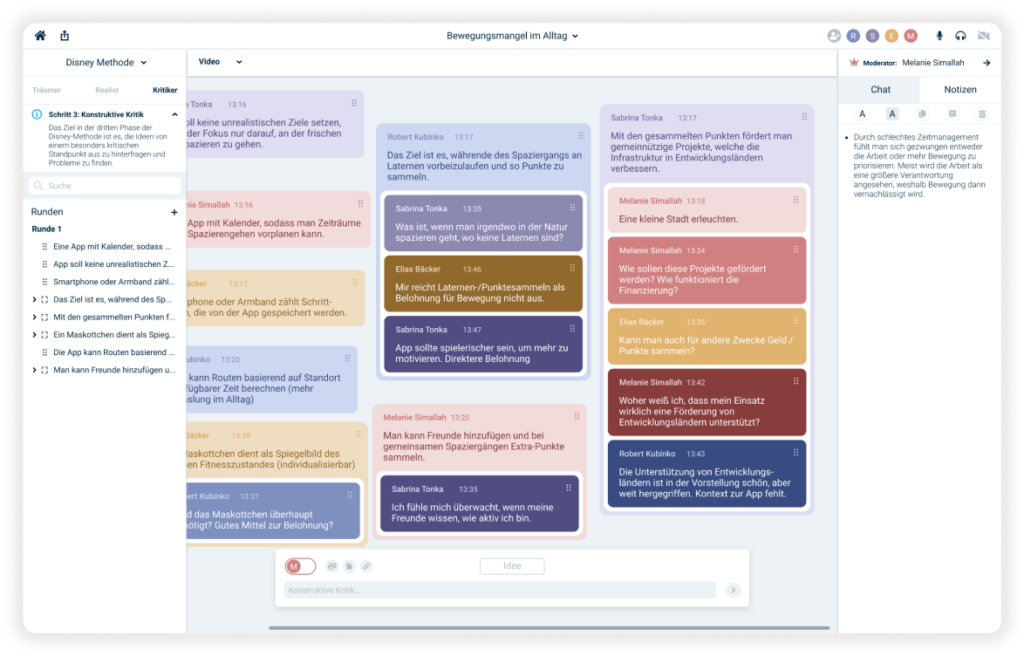
Walt Disney Method
The Walt Disney Method is particularly helpful in a later phase of the problem-solving process to evaluate existing ideas and is carried out by taking three different perspectives. The perspectives are divided into dreamer, realist and critic. First, participants representing the role of the dreamer try to solve the problem by generating ideas without evaluation. Then, the participants who take the role of the realist have to check the ideas for feasibility by thinking rationally. Finally, the representatives of the critical point of view doubt the created concepts and question to what extent they can fail. This process is repeated in rounds until an idea is produced that satisfies even the critic.
Visual system
Colours
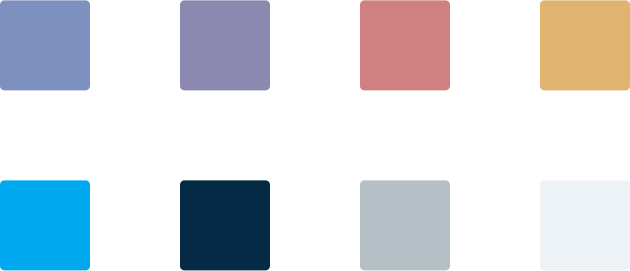
Typography

Bold, medium, regular, & light; used for headers, sub-headers, buttons, & body text
Outcome
Deliverables
Designed and prototyped screens illustrating the concept of a web application for creativity techniques.
Values
The web application concept provides value to creative teams that want to collaborate remotely.
Simplified collaboration
The web application provides all the tools and equipment a creative team needs to collaborate on a selected creativity technique.
Optimised process
Cognitive processes are taken into account in the design of the web application in order to efficiently optimise the use of creativity techniques.
Remote access
The web application enables creative teams worldwide to collaborate remotely on creativity techniques.
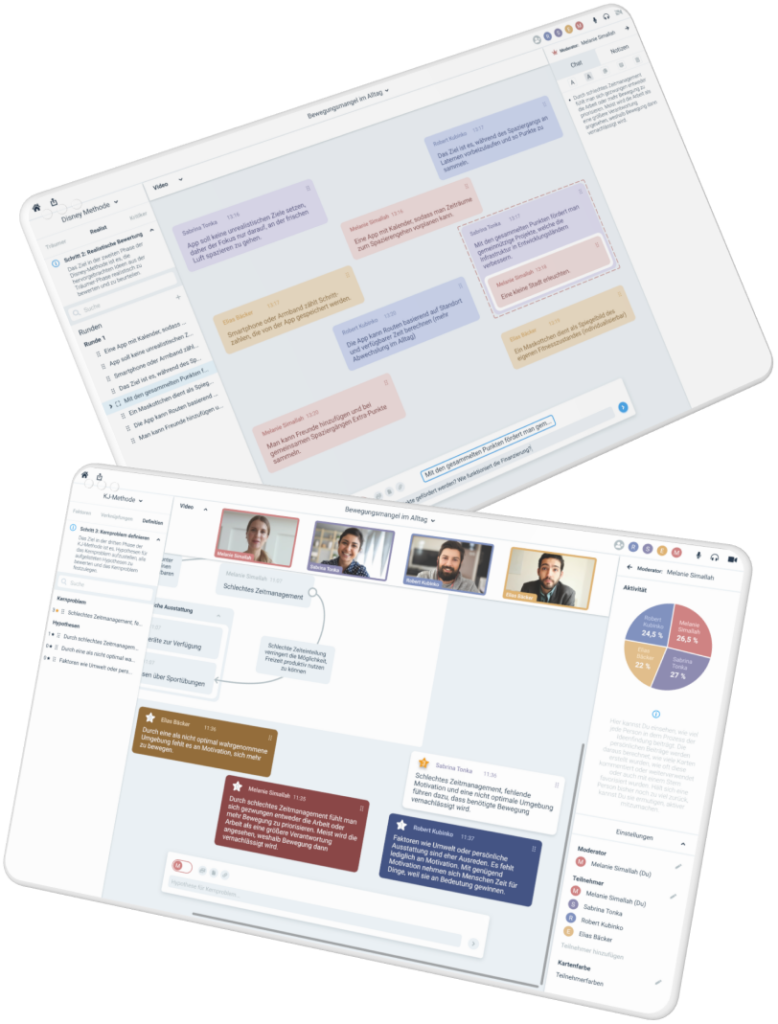
Future Roadmap
Future research
Once a product like this could be built in a MVP form, there are several things that should be tested. A few are included below:
To what extent can this tool be used intuitively by different people?
Does the use of this tool improve the results of the creativity technique carried out?
What are the most common creativity techniques people use this tool for?
Future use cases
Right now, the concept is focused on providing a web solution for the application of creativity techniques. But with continued research and iterations, here are some possible extensions of the application:
Mobile support
How might this concept be applicable in the form of a mobile app? What are the limits of a mobile version in terms of promoting cognitive processes?
Blank canvas
How might this concept be adapted to allow users to be creative without applying a specific creativity technique? To what extent can this application provide general tools for the creativity process?
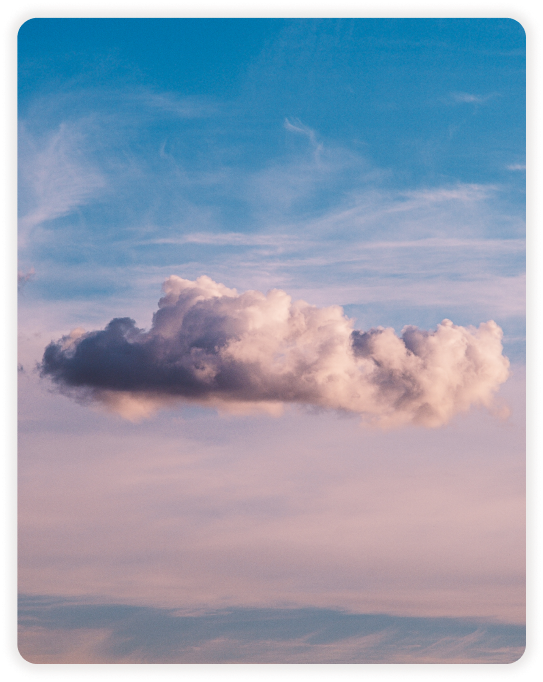
Contact
info@elenabraeutigam.com
